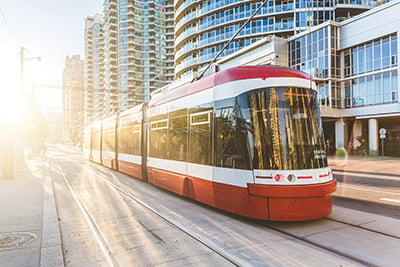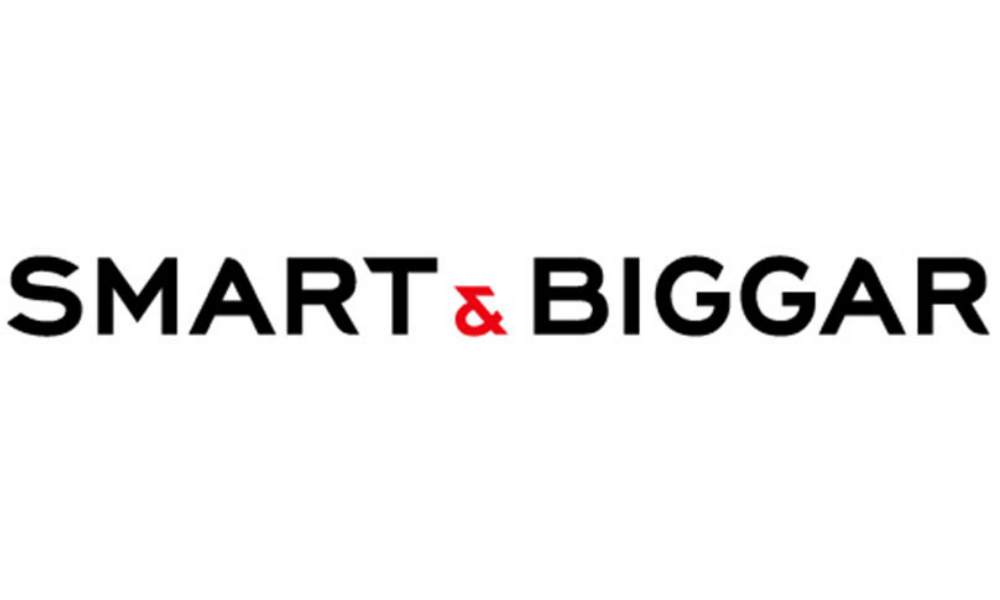Few things frustrate Torontonians more than their public transit system. The daily commute for transit users across Canada’s largest city is frequently fraught with breakdowns, delays, overcrowding and faulty streetcars.
Moving millions of people across Toronto and its surrounding area is a massive undertaking and, as the size of the city dramatically increases, strains on the system have become more apparent. Getting new public transit Infrastructure projects off the ground is increasingly important, especially as the Greater Toronto Area’s (GTA) population is expected to rise from close to seven million to almost 10 million by 2041.
Fortunately, “Canada generally is charging ahead with important transit Infrastructure projects across the country,” including “significant transit projects both in process and planned for Toronto,” says Sharon Vogel, a Partner in Singleton Urquhart Reynolds Vogel LLP’s Construction and Infrastructure Law practice group in Toronto.
“When you look at what is being done all over North America, Toronto is one of the most exciting jurisdictions to look at in terms of the potential for transit Infrastructure,” says Vogel. She adds that it’s amazing “when you look at what the city has accomplished and you think about how transit in the city has improved.” Ongoing transit initiatives include “some of the largest projects undertaken anywhere in the world and in the coming years we could see significant additional projects.”
Even though a great deal has already been done to develop transit within the GTA and across southern Ontario, “much remains to be accomplished,” says Bruce Reynolds, who is co-chair of Singleton Urquhart’s International Construction Projects Group. “Ontario is very well-situated to further advance the transit agenda through the efforts of expert agencies like Metrolinx and Infrastructure Ontario.”
The province’s Crown agency, Infrastructure Ontario, acts as procurement and commercial lead for all major provincial public Infrastructure projects. Government of Ontario agency Metrolinx is a driver of transit in the province. Created under the Metrolinx Act, 2006 to improve coordination and integration of transportation in the Greater Toronto and Hamilton area, it is undertaking the largest transportation investment in Ontario’s history and now has more than 200 projects underway worth more than $16 billion. Since Metrolinx set out its transportation plan, The Big Move, in 2008, it has increased weekly GO Transit train trips by 500% and added more than 12 million passenger trips a year.
Other Metrolinx transit Infrastructure projects that have been completed include the Union Pearson Express (UP Express) train from Union Station to Pearson Airport and renovations at Union Station that have enlarged the size of GO Transit’s concourse area. Once the Union Station upgrades are complete, they will provide “faster transit through the hub and an improved experience for the travelling public,” says Reynolds. There will also be a new underground PATH connection and a second subway platform.
A successfully completed Toronto Transit Commission (TTC) project is the six-station, 8.6-kilometre extension of the Line 1 subway that reaches up to the City of Vaughan in York Region, north of Toronto. For that project, the province provided $974 million through the Move Ontario Trust and the federal government committed $697 million, while the City of Toronto and York Region contributed $904 million and $604 million respectively.
One major project currently under construction is the Eglinton Crosstown light rail transit (LRT). Begun in 2013 and expected to be complete in 2021, the Crosstown is a design-build-finance-maintain (DBFM) P3 valued at $9.1 billion. It’s “Ontario’s first large-scale public Infrastructure project that requires the developer to ensure local communities and historically disadvantaged and equity-seeking groups directly benefit from the investment,” says Anne Marie Aikins, Senior Manager, Media at Metrolinx. The Crosstown’s 19-kilometre light rail transit line will run in dedicated right-of-way lanes along Eglinton Avenue from Weston Road to Kennedy subway station, including 10 kilometres running underground.
“Toronto is already at the forefront of transit development in North America, if not globally, in relation to the existing Eglinton Crosstown LRT project,” says Reynolds. Then again, “we had a lot of room for improvement. When you compare the transit grid of the Toronto underground with other major cities in North America, the need for further development is obvious.”
Another high-profile transit project now underway in the Toronto area is the GO Regional Express Rail (RER) service, one of The Big Move rapid transit projects, which will gradually increase GO train service. Once its electrification program is complete, it’s expected to provide 6,000 weekly trips by 2025. In March 2017, the federal government announced that it will contribute $1.9 billion of the total estimated $13.5 billion cost, including as much as 150 kilometres of new track, as well as new bridges and tunnels.
The GO RER project “involves the conversion of the GO system from a commuter rail system to a true regional rail system,” says Dana Porter, a Partner in the Real Estate Group at Stikeman Elliott LLP in Toronto. “At one point they were talking about electrifying the whole system, now it looks like it may be just electrification of part of the system, probably including the UP Express piece of it and a bunch of new rolling stock.”
In these transportation Infrastructure projects, there’s always a problem of crossing roads and other railways but one of the biggest issues is the crossing of utilities. At the core of any P3 project is a transfer of risk, says Porter. “There’s a long list of things that are risks in the documentation on the legal side and you need to be clear about who’s responsible for each risk.”
The details of these huge projects must be built into the project agreements, which are usually a couple of hundred pages long and include a number of schedules, some more technical than others. These are largely handled by the engineers and technical people, says Porter, “but it does fall to the lawyers to make sure that those dovetail with the contract so that things work together.”
Public transit Infrastructure projects are huge, complicated, expensive and take years to plan and implement. “By the time you see holes in the ground and heavy equipment moving around and hoarding up, the work’s probably 90% done in terms of the planning and the preparation work and the political work and the agreements,” says Porter.
All levels of government are involved in deciding whether to push forward with a major transit project, which can create a rocky road since it “assumes a fairly high level of cooperation between the three levels of government,” says Porter. “It’s also a pretty fragile model because it means you’re only as strong as the weakest link in the chain and if one of the three levels of government decides that they can for whatever reason opt out, then that throws a spanner in the works.”
Indeed, political interference has affected several transit projects over the years as some have been cancelled well into the planning stages, including former Premier Mike Harris’s cancellation of the Eglinton subway construction in 1995. Former Mayor Mel Lastman subsequently secured funding for the little-used Sheppard subway, also known as “the subway line to nowhere.” Former Mayor Rob Ford scuttled his predecessor David Miller’s Transit City plans, including Scarborough’s Sheppard LRT project, in 2010.
In March, Ontario’s Liberal government promised to match the feds’ $4.8 billion in funding to expand Toronto’s transit networks over the next decade. Mayor John Tory was pleased that several projects could finally move forward. “For the first time, we now have all three governments dedicated to building the Relief Line, SmartTrack, the Scarborough Subway Extension, waterfront transit, and the Eglinton East LRT,” he said in a statement. “After years of delays and divisive debates, we are finally getting on with expanding our transit system, we are getting on with working together to build up our cities.”
Now with a Progressive Conservative provincial government in place, plans could change yet again, although Premier Doug Ford “has articulated very important priorities for transit,” observes Tristan Musgrave, a Partner in McCarthy Tétrault LLP’s Real Property, Project Development and Infrastructure Group in Toronto.
The PC’s election platform included the delivery of two-way, all-day GO train service, including expansions to Bowmanville, Kitchener and completing the Niagara GO Expansion. It also promised to upload responsibility for subway Infrastructure, including the building and maintenance of new and existing subway lines, from the city to the province.
In July, Premier Ford said he planned to partner “with Toronto and other GTA municipalities to build a world-class transit system,” allocating $5 billion to go towards subways, relief lines and two-way GO Transit to Niagara Falls.
“I think [the new government] is still focused on transit projects, both for the moving of people and for the moving of goods, which is a huge priority for the GTA,” says Jim Janetos, a Partner in McCarthy Tétrault’s Projects Group in Toronto. “I think it’s fair to say that the Infrastructure is an important part of their platform,” he adds, and those working in the area “think that’s going to continue. The investments are going to be made in Infrastructure going forward.”
Musgrave says the huge Infrastructure deficit in Ontario is a big priority for the government. “I don’t think that’s going to change and that’s good for jobs, good for people and good for the economy.”





